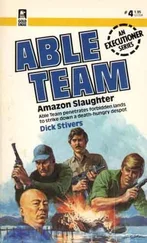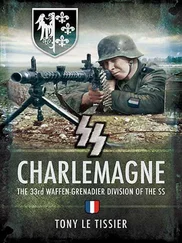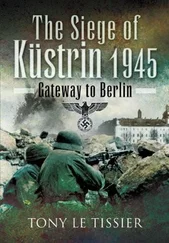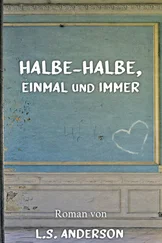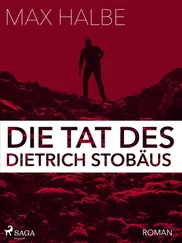1. The 12th Army with its southern group, abandoning the security of the Wittenberg area, is to reach the line Beelitz–Ferch, thus cutting off the rear communications of the Soviet 4th Tank Army advancing on Brandenburg, and at the same time to pursue the attack eastwards to unite with 9th Army.
2. 9th Army, while holding on to its present eastern front between the Spreewald and Fürstenwalde, is to attack by the shortest route to the west and link up with 12th Army.
3. Once both armies have combined, they are to push northwards and destroy the enemy formations in the southern part of Berlin and establish a solid link with Berlin. [21] Förster/Lakowski, 1945 – Das Jahr der endgültigen Niederlage der faschistischen Wehrmacht , p. 338.
EIGHT
Preparing the Break-Out
26 APRIL 1945
Elements of the von Luck and Pipkorn battlegroups continued fighting around Baruth during the early hours of 26 April, and some of the dug-in Stalin tanks were blown up by specially detailed units, but there was still no follow-up by other units coming from the pocket. Some groups occupied Mückendorf and the woods around it, but concentrated artillery fire prevented any further progress against the 395th Rifle Division, which had moved up from the Golssen area. Shells bursting in the treetops caused many casualties among the German troops and accompanying civilians.
Hans Lehmann described events in Baruth that day:
The Baruth Schloss was occupied by Waffen-SS and Wehrmacht troops of units mainly made up from stragglers on 25/26 April 1945. Heavy fighting broke out, most of the damage coming from Soviet mortars, artillery and tanks. Aircraft were also active over the northern part of the town and the woods. German supply canisters were even dropped on 26 April, and a Ju 52 carrying ammunition and Panzerfausts crashed on the Mühlenberg [hill] that night, having apparently been shot down.
Two temporary cemeteries were established for the fallen Soviet soldiers, one at the crossroads outside the town cemetery and one in front of the Schloss. The remains from both were transferred to the Soviet War Cemetery on the B96 in 1947. There were about 400 Soviet soldiers in the cemetery at the Schloss. [1] Schulze, Der Kessel Halbe–Baruth–Radeland , p. 30.
Counterattacks by two other Soviet divisions into the left flank of the German forces caused the latter to split and threw them back into the woods north-east of Baruth, while an attack by 4th Bomber Air Corps with 55 machines at midday had a catastrophic effect. Repeated strikes on the approach routes by 1st and 2nd Air Assault Corps, using between eight and ten aircraft at a time and flying some 500 missions, brought further heavy casualties and chaos to the break-out traffic. In the end these troops were cut off, surrounded and mainly destroyed, although some of the tanks are said to have reached as far as Sperenberg. [2] Kortenhaus, Der Einsatz der 21. Panzer-Division , pp. 139–40.
According to Soviet accounts, this break-out attempt resulted in 5,000 prisoners, 40 tanks and SPGs destroyed and the capture of nearly 200 guns and mortars.
Apparently surprised by the strength and aggressiveness of this attack, Marshal Koniev took further measures to cope with all eventualities. One of these was an attack towards Münchehofe, aiming to penetrate the pocket from the south. More troops were fed in to strengthen the blockade along the Luckenwalde–Märkisch Buchholz front, especially north of the Hammerfliess stream and along the autobahn. The 149th and 253rd Rifle Divisions took up positions along the autobahn from Teupitz to Terpt (due west of Lübbenau), thus also covering the road west to Luckau, and the three divisions of 28th Army’s 3rd Guards Rifle Corps occupied the Lindenbrück–Baruth–Dornswalde stretch of woods immediately west of the autobahn. Elements of 3rd and 4th Guards Tank Armies were also deployed, the 3rd Guards Tank Army contributing 71st Mechanized Brigade, an SPG regiment and a mortar battalion to the Rehagen–Neuhof sector around the Gross Wünsdorfer See facing south, while 68th Independent Guards Tank Brigade deployed along the Kummersdorf Gut–Baruth front facing north-east.
In this way three defensive cordons were established to a depth of 15–20 kilometres. The concentration of armour on the Zossen–Baruth road also included a mobile reserve. Every break-out attempt from now on would be even more difficult and complicated for the German troops. [3] Lakowsky/Stich, Der Kessel von Halbe 1945 , pp. 92–3.
Busse’s article on 9th Army’s last battle was written in Soviet captivity and published ten years after the event. Of 23 pages, only three are devoted to the pocket and break-out phase and contain chronological errors, dating the main break-out as 26 April instead of 28 April, and what he wrote of 24 April clearly, and totally unfairly, refers to the von Luck / Pipkorn attempt of 25 April:
The first attempt on 24 April to slip away from the constrictions of the pocket to the west failed. The armoured troops committed to the gap near Halbe did not wait for the arrival of the infantry, as they had been strictly ordered to, but drove on for their own safety. So the Russians closed the breach before the infantry could prop it open and get through. The author has unfortunately forgotten the names of the commanders and units who left their comrades in the lurch on this occasion. [4] Busse, ‘Die letzte Schlacht der 9. Armee’, p. 167.
It seems that Busse was trying to cover up his own inadequacy here, for he himself was responsible for issuing the relevant orders, and for organising the follow-up by the infantry that failed to materialise. He was also to blame for not allowing the armoured troops to take ammunition and fuel reserves with them to sustain their action. His failure to have a proper grip on the situation may have been partly due to his headquarters being on the move from the Scharmützelsee railway station to the Hammer forestry office during the night, but still does not excuse him. [5] Tieke, Das Ende zwischen Oder und Elbe , p. 192.
SS-Second Lieutenant Porsch of Tank-Hunting Company Dora II continued his account:
I knocked out two anti-tank guns near Märkisch Buchholz that stood in our way. A few hours previously I had been awarded the Knight’s Cross. A staff officer brought it to me, as I could not leave my men.
Things were happening as never before in this war. We sat in a pocket and the Ivans hammered us with weapons of all calibres and massive air attacks. Soldiers of all branches of the service and ranks up to general were fighting with rifles or machine-pistols in their hands, men, women and children swarming around us. Afraid that we would break out of the pocket and leave them behind, they clustered around us and fell in heaps from Ivan’s explosive shells. As often as we tried, as often as we attacked, we still came up against a fresh barrier that cost death and suffering. [6] Wilke archives.
However, 9th Army was not Koniev’s only major problem that day, for General Wenck launched his rescue operation with XX Corps from the line Brandenburg–Belzig at dawn, not heading towards Jüterbog as the OKW expected but towards Potsdam, where the Soviet forces did not appear to be quite so strong. The roads were blocked with refugees, so the troops had to move across country on either side of the railway line leading to Berlin. Wenck’s aims were given as saving: the wounded from the field hospitals within the army’s operational area, the remains of 9th Army, the Potsdam garrison, and the refugees. Consequently, General Carl-Erik Koehler, commanding XX Corps, was instructed to secure his flanks on the Elbe to ensure an open passage to the west.
Читать дальше

